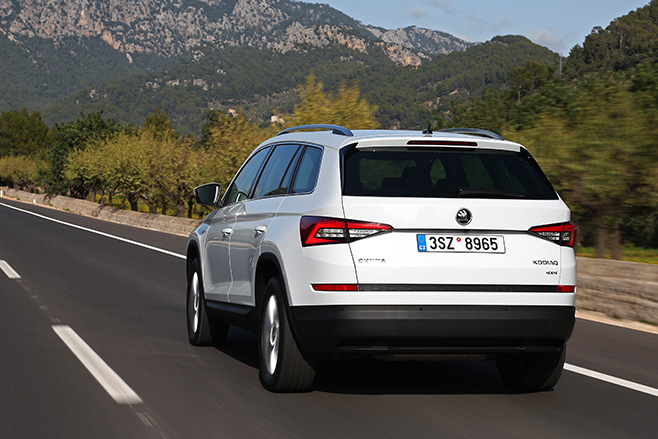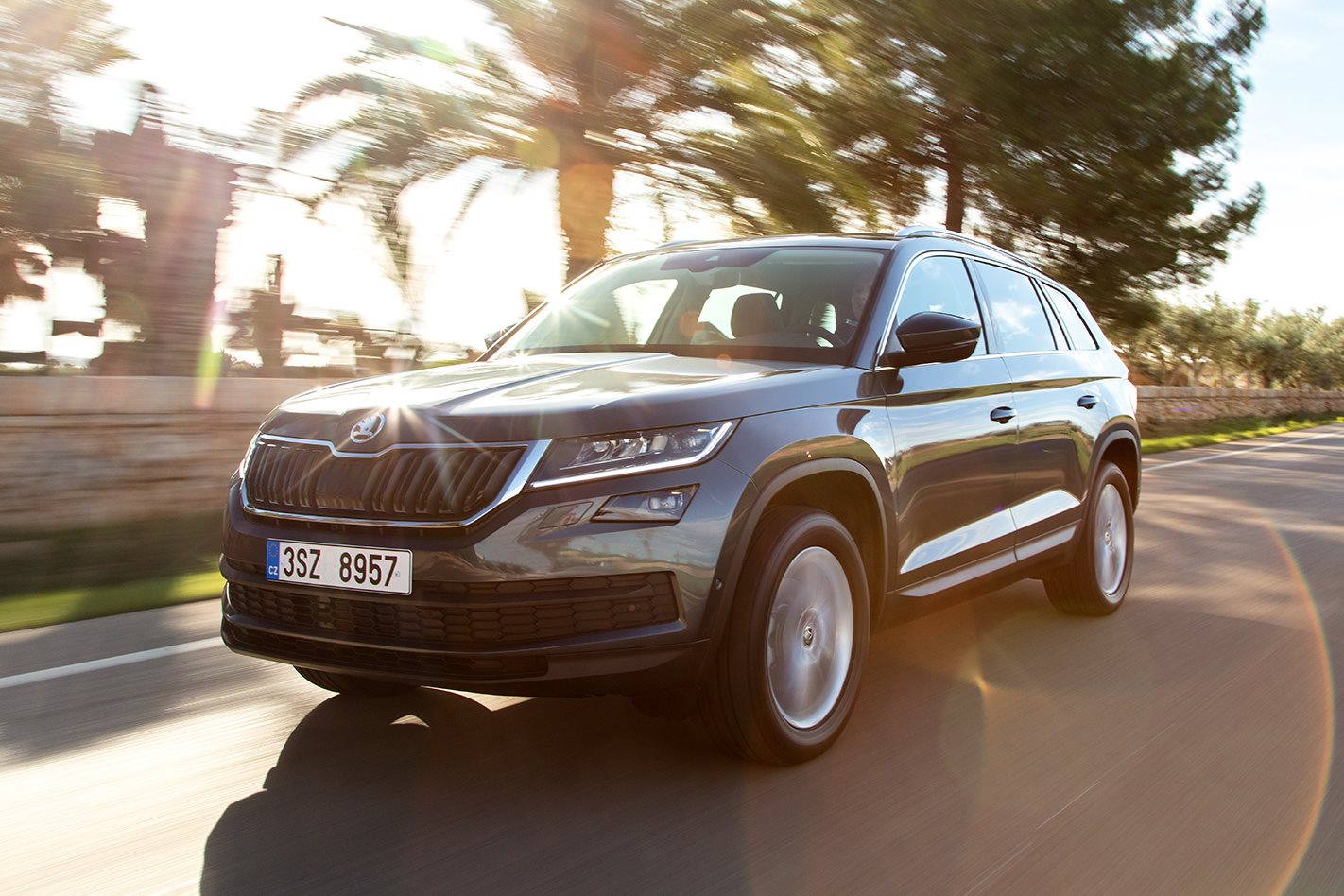The Skoda Kodiaq – Skoda’s first full-sized SUV – could be a big seller in Australia, so we got in early to get a taste.
WHAT IS IT? Skoda’s first full-sized SUV – the mostly hatchback Yeti not really counting here – which will arrive in Australia next year complete with standard all-wheel drive and pop-up third row seats. Underneath it’s another remix of the familiar VW Group MQB architecture. Australia will get a simplified model line-up with just the 132kW 2.0-litre TSI available from launch, and a 140kW 2.0-litre TDI diesel following some way behind. All our versions will also come with both seven seats, all-wheel drive through a part-time Haldex system and a seven-speed DSG twin-clutch gearbox.
WHY WE’RE TESTING IT This is new ground for Skoda, and a car particularly well suited to Australian tastes – this could be the brand’s first big hit down under. Although spun from the same familiar MQB model architecture as the Octavia and Superb – and indeed most stuff that VW Group makes these days – the Kodiaq has the neat USP of those pop-up third-row seats. It’s set to launch in a market segment filled with tough competitors, but if Skoda can price (and equip) the Kodiaq well, it stands an excellent chance.

THE WHEELS VERDICT Much about the Kodiaq is familiar – it’s as sensible and well-built as pretty much everything else that Skoda produces. But it also offers a brave new direction for the Czech brand thanks to the combination of its crossover design and seven-seat practicality. The Kodiaq is definitely a ramped wagon rather than a rugged off-roader, but it works extremely well on-road and – on the basis of our first impressions – is set to put up a stern challenge to the segment’s established leaders.

Skoda is definitely pitching the Kodiaq at the lifestyle market, and it’s fair to see it as a bigger alternative for the Volkwagen Tiguan – size wise it pretty much splits the difference between that car and the Touareg. The Kodiaq is another stirring of the pot which is VW Group’s MQB product matrix, but with the neat USP of a pop-up third row of seats. This will be optional in most markets, but standard in Australia. Similarly we’re not going to get any of the smaller capacity engines or the option of front-wheel drive, with all cars coming here having either 2.0-litre petrol or diesel turbo donks, all-wheel drive and the familiar seven-speed DSG twin-clutcher.



Australian sales of the Kodiaq start in the middle of next year. We’ll only have the TSI available from launch, with the official hope being that the TDI will join the line-up within a year. On first impressions it’s a fine all-rounder rather than the sort of car to set pulses racing, but it definitely puts ticks next to a lot of boxes.
SPECS Model: Skoda Kodiaq 2.0 TSI 4×4 Engine: 1984cc 4cyl, dohc, 16v Max power: 132kW @ 3900rpm – 6000rpm Max torque: 320Nm @ 1400rpm – 3940rpm Transmission: Seven-speed twin-clutch, four wheel drive. Weight: 1738kg 0-100km/h: 8.2 sec (manufacturer) Fuel economy: 7.3L/100km (EUDC) Price: c$45,000 (estimate) On sale: Summer 2017





